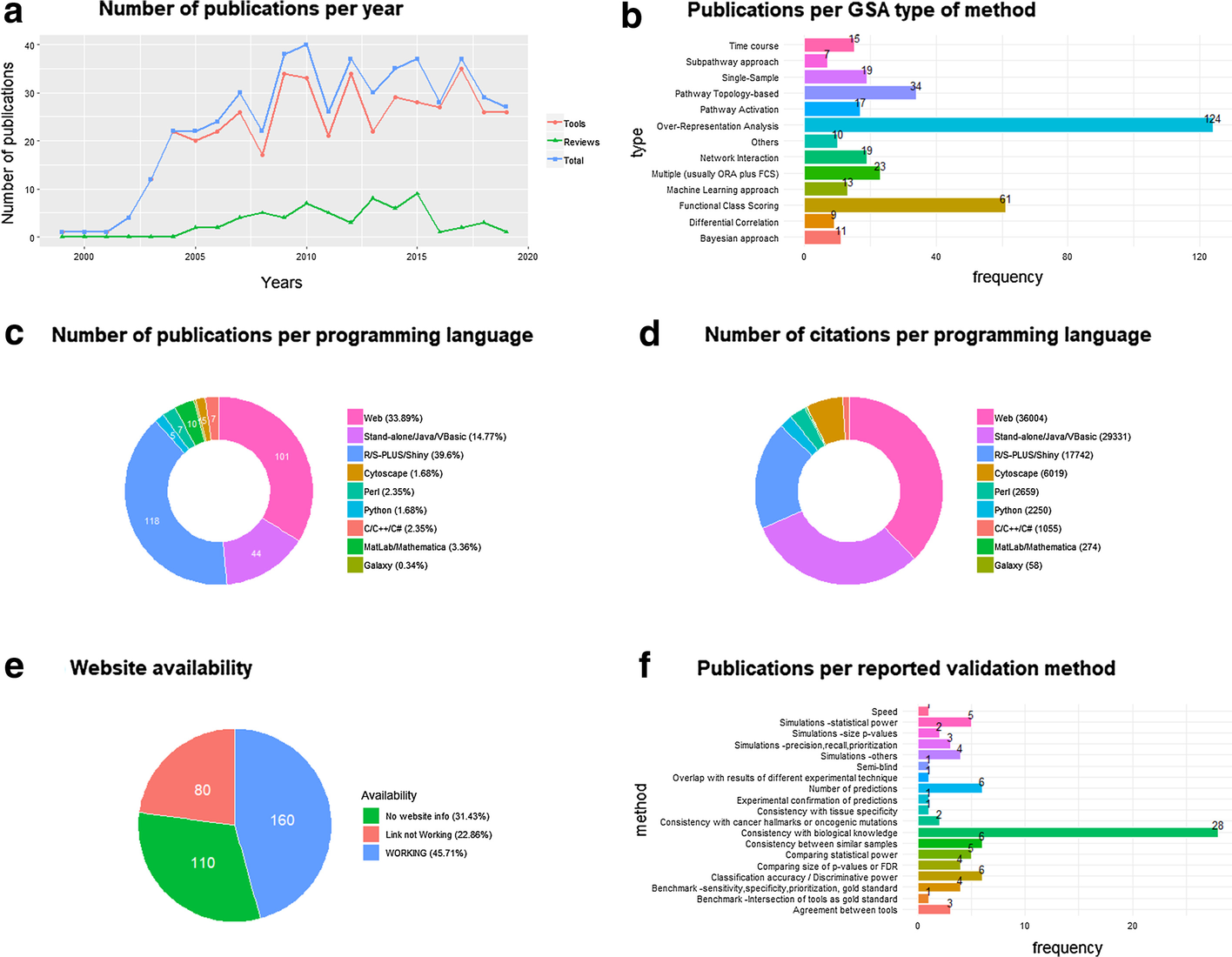Difference between revisions of "Template:Article of the week"
Shawndouglas (talk | contribs) (Updated article of the week text) |
Shawndouglas (talk | contribs) (Updated article of the week text) |
||
| Line 1: | Line 1: | ||
<div style="float: left; margin: 0.5em 0.9em 0.4em 0em;">[[File: | <div style="float: left; margin: 0.5em 0.9em 0.4em 0em;">[[File:Fig1 Xie BMCBioinfo21 22.png|240px]]</div> | ||
'''"[[Journal: | '''"[[Journal:Popularity and performance of bioinformatics software: The case of gene set analysis|Popularity and performance of bioinformatics software: The case of gene set analysis]]"''' | ||
Gene set analysis (GSA) is arguably the method of choice for the functional interpretation of omics results. This work explores the popularity and the performance of all the GSA methodologies and software published during the 20 years since its inception. "Popularity" is estimated according to each paper's citation counts, while "performance" is based on a comprehensive evaluation of the validation strategies used by papers in the field, as well as the consolidated results from the existing benchmark studies. Regarding popularity, data is collected into an online open database ("GSARefDB") which allows browsing bibliographic and method-descriptive [[information]] from 503 GSA paper references; regarding performance, we introduce a repository of [[Jupyter Notebook]] [[workflow]]s and Shiny apps for automated benchmarking of GSA methods (“GSA-BenchmarKING”). After comparing popularity versus performance, results show discrepancies between the most popular and the best performing GSA methods. ('''[[Journal:Popularity and performance of bioinformatics software: The case of gene set analysis|Full article...]]''')<br /> | |||
<br /> | <br /> | ||
''Recently featured'': | ''Recently featured'': | ||
{{flowlist | | {{flowlist | | ||
* [[Journal:Privacy-preserving healthcare informatics: A review|Privacy-preserving healthcare informatics: A review]] | |||
* [[Journal:Secure data outsourcing in presence of the inference problem: Issues and directions|Secure data outsourcing in presence of the inference problem: Issues and directions]] | * [[Journal:Secure data outsourcing in presence of the inference problem: Issues and directions|Secure data outsourcing in presence of the inference problem: Issues and directions]] | ||
* [[Journal:Digital transformation risk management in forensic science laboratories|Digital transformation risk management in forensic science laboratories]] | * [[Journal:Digital transformation risk management in forensic science laboratories|Digital transformation risk management in forensic science laboratories]] | ||
}} | }} | ||
Revision as of 15:47, 7 February 2022
"Popularity and performance of bioinformatics software: The case of gene set analysis"
Gene set analysis (GSA) is arguably the method of choice for the functional interpretation of omics results. This work explores the popularity and the performance of all the GSA methodologies and software published during the 20 years since its inception. "Popularity" is estimated according to each paper's citation counts, while "performance" is based on a comprehensive evaluation of the validation strategies used by papers in the field, as well as the consolidated results from the existing benchmark studies. Regarding popularity, data is collected into an online open database ("GSARefDB") which allows browsing bibliographic and method-descriptive information from 503 GSA paper references; regarding performance, we introduce a repository of Jupyter Notebook workflows and Shiny apps for automated benchmarking of GSA methods (“GSA-BenchmarKING”). After comparing popularity versus performance, results show discrepancies between the most popular and the best performing GSA methods. (Full article...)
Recently featured:










